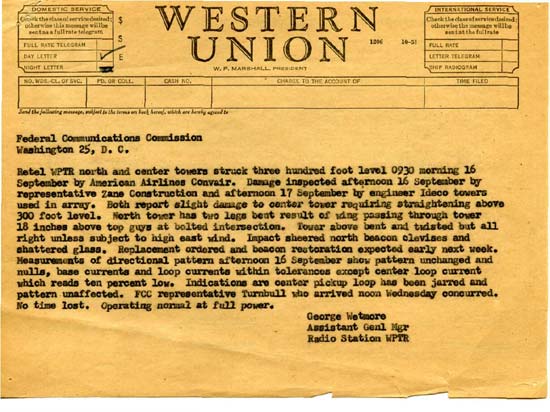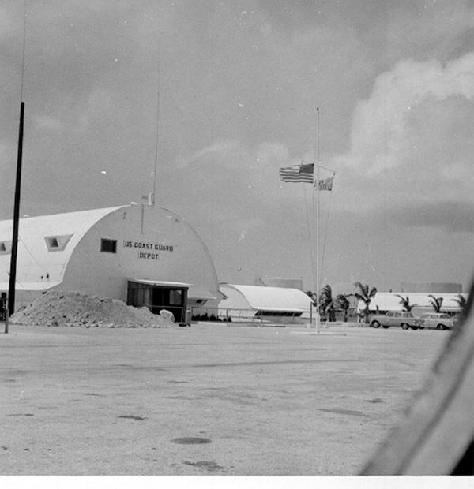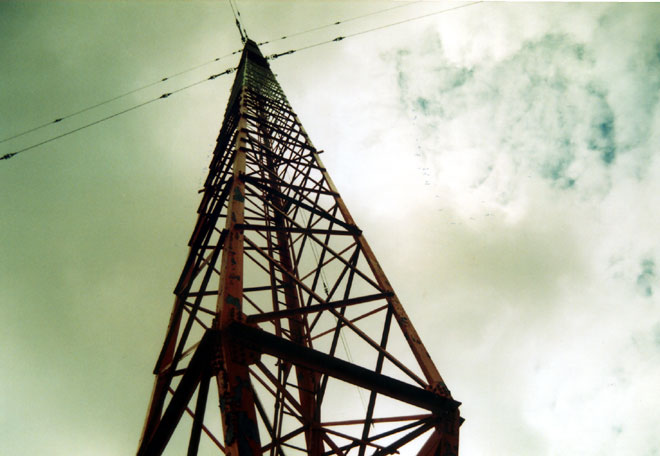I am reading up on American Bird Conservancy v. FCC. I must admit, I am a bit ignorant of all this bird v. tower stuff. After all, in my 25 to 30 years of working in radio, in and around towers almost every day, I have rarely seen a dead bird. By rarely, I mean I recall seeing exactly three dead birds at the base of towers. One, a mysterious-looking songbird under a 1000-foot tower in Harrisburg, PA. Another was a Pileated Woodpecker that flew into a chain link fence. The third was a half-eaten dead crow that likely met his fate at the hands of the resident Red-Tailed Hawk, who hung out on the tower looking for meals.
Even so, the FCC is going to hold hearings on this important matter, because it is so important. They also have finished all their other work and have nothing else to do.
According to the website Towerkill.com, millions of birds have been killed because they have flown into communications towers. In the FAQ section:
Thousands of migrant songbirds killed in a night at a single 1000-foot high television tower
I couldn’t reach BioFile Services, the domain owner, on their cell phones for comment.
I have been to hundreds of tower sites in states up and down the eastern seaboard, California, and Guam. In all that time, I can only account for one bird that may have died by flying into a tower. Where are all the other ones? Surely, when they hit the tower, they fall almost straight down, on account of gravity and the other laws of physics. That means the terrible carnage would be evident near the base of the tower, right?
The above-mentioned website states that tall towers that are in foggy areas and are lit at night pose the greatest risk.
Case in point:
1. WBNR, which has two 405-foot towers, is located along the Hudson River so it is often fogged in at night. The towers have four levels of lights with flashing beacons at the 200 and 400-foot levels. The site is also on a major N/S migration route for birds. Further still, it has a lawn extending 200-300 feet from the base of all the towers. This was the former studio location from 1959 until 1998. In the ten years, I worked there, I did not see one dead bird, nor did the tenant that lives in the building. No employees who worked at the former studio location recall seeing any dead birds either.
2. Mount Beacon, a group of 5 towers ranging up to 300 feet tall near the summit of Mount Beacon, around the 1200-foot AMSL. Certainly, these towers stick way up into the flight paths of migratory birds. One tower is lit at night with a red beacon light and it is often foggy. The area around the base of the towers is gravel/dirt and cleared away for at least 100 feet. Still, no bird carcasses. Nearby, however, there is a group of Bald Eagles, which have taken up residence in some of the craggy rocks.
3. Illinois Mountain, Highland, NY: Same story
4. Clove Mountain, Uniondale, NY: Same story
5. Mount Zion, Highland, NY: Same Story
6. Helderburg Escarpment, New Scottland, NY which has towers for the following stations: WRGB, WRVE, WFLY, WYJB, WPYX, WGNA, WMHT, WTEN, and WXXA: Same Story
7. Mount Equinox, Manchester, VT: Same Story
8. Pico Mountain, Rutland, VT: Same Story
9. WHP transmitter site, Enola, PA, six towers 410 feet tall: Same Story
10. WGY tower site, Schenectady, NY: 620-foot tower, same story
11. WHP-TV/WITF Harrisburg: The only place I saw a dead bird was at the base of a tower.
I could continue with the no dead birds found and include tower sites for WROW, WRZN, WDVH, WKZY, WXPK, WLNA, WKBO, WTPA, WIZR, WENT, and so on.
I would testify to these facts under oath.
There may actually be a few towers out there that are located in a position to inadvertently kill birds and that is unfortunate. The majority of towers, however, are no more deadly to birds than other man-made structures like houses and office buildings. I can think of at least two dozen times that I have been working in the office or sitting at home and there is a great big “THUNK!” Outside there is a dead bird under the window. While that is regrettable, I am not going to take the glass out of my windows.
I also see many dead birds on the side of the road when I am walking or riding my bike.
Human pets, especially cats take a huge toll on wild birds.
Loss of natural habitat from development takes a toll on birds.
This is a Red Herring. It is time to put this foolishness to bed and get back to the business at hand.






Same here. Been to plenty of 2-WAY/Radio & paging sites, no dead birds. I had read that this was a problem with the former World Trade Center buildings in NY City. Never
actually saw this with my own eyes though. Occasionally I have heard birds hitting the elements of antennas for my HAM station. Never found any carcass in my yard. These facts and figures that are being presented are for birds hitting towers in major migratory flyways. But this has been an issue with suspension bridges as well. Just how protective are we supposed to be?
You know what else we have that are stationary and sit above the ground? Trees. We need to cut all of those down. And what else? Oh, yeah, homes. Everyone who agrees with the theory that towers are the problem are hereby ordered to dig a hole in the ground and live in it. (We’ll take up the problem of worm migration at a later time…) What else? Mountains. Those gotta go. Might have to break out some nukes on those. Doubt we have the C4 to handle’em all.
Total lunacy! Radio towers stand still bothering no one! Jet engines in airplanes are plugged many times with birds forcing dangerous abrupt landings! One recent case in the Hudson River! So, let’s mandate birdhouses with feeding stations on all towers, no more tower lighting, jet aircraft, or hunting. Just think of the energy savings!
In my opinion this is no stupider than FCC forcing those obnoxious strobe lights on towers everywhere that in some cases where I live the tower is lower than the adjacent trees! I was told by the local FAA person that the red lights that were previously used were attracting birds (figure that one out) so that’s why they started mandating high intensity white strobes everywhere. They’ve even toyed with the idea of putting them on windmill farms where there could potentially be 30 or 40 (or more)of those obnoxious things strobing day and night. The whole thing is out of control. And we all know what it’s really about – Money! He who lobbies the hardest will get their product mandated by influencing the right corrupt government officials.
“I can think of at least two dozen times that I have been working in the office or sitting at home and there is a great big “THUNK!” Outside there is a dead bird under the window. While that is regrettable, I am not going to take the glass out of my windows.”
This reminds me of the Windex commercials. I too see a ton of dead birds while running around town and I have a cat that especially likes to “play” with birds, probably because the rabbits have gotten too fast for him. There are definitely going to be some areas more prone to bird deaths than others, and those are probably the ones this is targeting.
Wildlife conservation groups themselves can only broadly estimate the loss of fowl life, conjecturing that between 5 million and 50 million birds die from tower encounters. However, if the 80,000 or so towers around the country are bringing down even 1 million birds a year – an average of 13 birds per tower – that probably is enough to warrant a look at new lighting and other fowl safeguards.
With that said, it would be interesting to see the numbers they estimate die from bridges, buildings, trees, even cars and other wildlife.
Look on the ledge toward the right side of the tower.
@Stephen, Nice shot, looks like a Peregrine Falcon. He is not playing along… somebody needs to run over there and tell him that he should be dead.
Paul, I took a glance at the tower kill site “science.” Its shady at best. Just a quick glance reveals that none of the papers reflect their claimed “1000 bird deaths a night figure.” Pure fiction as most of the papers seem to intimate that the birds are attracted and confused by the lights. Additionally, if the FFA would just allow the stations to do away with those pesky lights, all would be well!
Given their stated purpose as an advocacy group, they have to make a problem where none existed, thus needing a significant chuck of change from the taxpayers.
I suspect with the high numbers of bird strikes at wind turbine sites, the will refocus their energy elsewhere.
Wesley Horton KOWHH.
Realizing this item is some FOUR years old, it is still fascinating. I find great parallels in other debates such as the infamous Gun control debate and the “Global warming” craze. As I noted, all rely on massive government intervention and or tax dollars.
The Statement,
“Thousands of migrant songbirds killed in a night at a single 1000-foot high television tower”
Caught my attention. I spent a bit of time perusing the pages of towerkill.com. After reviewing some of their articles, This paragraph summerizes it best:
”One long term study found more than 120,000 bird carcasses under a 300 m TV tower from 1957-1999 (Kemper 1996). This included more than 24 individual nights when more than 1000 birds were documented killed in the towers vicinity (Kemper, pers. comm.). Such Large nocturnal tower kills appear to be exclusively associated with low cloud cover or rain; under such conditions, a towers aviation obstruction lights clearly induce aggregation of migrating birds (primarily species is the order Passeriformes) Most of the kills are believed to result when birds collide with a towers supporting guy wires, the tower itself, or from mid air collisions with other flying birds.”
Kemper, C. 1964. A tower for TV, 30,000 dead birds. Audubon Magazine 66: 86-90.
——-. 1996. A study of bird mortality at a west-central Wisconsin TV tower from 1957-1995. Passenger Pigeon 58: 219-235.
Interesting to note, Passeriformes area type of sparrow. See http://en.wikipedia.org/wiki/Passerine
Notice the 1000 birds a night comes from a personal communication with Kemper. Also of note is the “120,000 bird carcasses under a 300 m TV tower from 1957-1999” figure.
Over 52 year period, that works to be 2307 birds per year or about 6.3 birds a day. Not as imposing.
Most of the articles site Fog, rain or other bad weather as an affect, as well as the type of tower lighting. (Steady red or white, vs. Flashing red or white)
I’ve not been able to locate a copy of the article that addresses the specific article. Many of the links under their science section to the SOPA search site do not return the listed articles, even with significant effort to find them.
ULTIMAELY, I am guessing that the courts finding in American Bird Conservancy v. FCC. took a lot of wind out of their sails when it decided:
Accordingly, the district court’s judgment dismissing American Bird’s action for lack of subject matter jurisdiction is
AFFIRMED.
Wesley Horton K0WHH